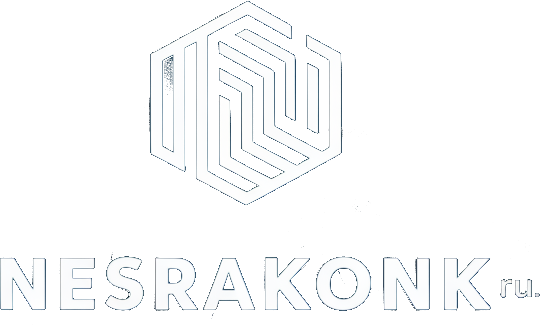Скорректированный продукт с разграничением рисков обеспечивает различные уровни толерантности к рискам, объединяя в портфеле несколько активов
Децентрализованные финансы (DeFi) могут стать самым радикальным развитием технологии блокчейн и криптовалют, потенциально создав новую основу для глобальных финансов.
Одним из проектов, создавших ранние прецеденты DeFi, был MakerDAO, который стал пионером в использовании отдельного токена для управления, MKR, и стейблкоина, обеспеченного криптовалютой в качестве залога — DAI. Затем появилась Compound (COMP), которая позволяла клиентам брать и давать в долг избранные криптовалюты, используя маржинальную систему, контролирующую риск залога.
Эти ранние разработки привели к рынку DeFi, который мы видим сегодня, с множеством доходных продуктов, которые, похоже, консолидировались в одну из трех вариаций. Существует стандартная программа депозита/кредитования, наиболее часто используемая обычными пользователями DeFi, в которой они просто депонируют или одалживают свои токены в обмен на доходность.
Более продвинутые пользователи могут использовать децентрализованные биржи (DEX), на которых пользователи вкладывают свои токены в пул ликвидности, или же предпочитают агрегаторы доходности. Каждый из этих способов ориентирован на пользователей с разной склонностью к риску, причем те, кто не любит рисковать, выбирают более низкую доходность стейблкоинов, а те, кто более терпим к риску, скорее всего, готовы рисковать больше ради более высокой доходности пулов ликвидности.
Теперь появились продукты, которые позволяют даже более склонным к риску инвестировать в более рискованные продукты без опасности потери основной суммы, что придает им гораздо большую привлекательность, чем стандартные низкодоходные продукты. Waterfall DeFi предлагает структурные инвестиционные продукты, в которых пулы генерирующих доход активов DeFi упакованы в три различных «транша». Each is given seniority based on expected yield, risk and maturity.
Tranches
The tranche seniority is determined by the method of capital distribution, in which cash flows generated from the portfolio are paid out in a cascading or waterfall-like fashion. Payments are first made to the senior tranche, then passed onto a mezzanine tranche. In having the last right to the cash flows, the junior tranche has the highest risk, which entitles it to a greater portion of potential rewards.
In the case of a loss, senior tranche users are still paid their principal, in addition to a fixed return, while junior tranche users would incur a principal loss but be paid the remaining capital. While in the case of a profit, senior users are only paid their fixed APY, and the remainder of returns go to junior tranche users.
The team
With an experienced background in traditional finance, the founders of Waterfall knew the significance of fixed-rate offerings since they represented a sizable portion of the total market. Consequently, this became a niche they noticed in a market where lending protocols are almost all under variable rates.
More insights on waterfall defi here
Founder 0xWaterfall spent ten years with a Tier 1 investment bank specializing in cross-asset structured products, spending the past five years deploying those trading strategies in crypto. Meanwhile, project lead Tom Cheng graduated from Harvard and was previously a consultant with McKinsey & Co.
WTF token
The native governance token issued by the Waterfall DeFi platform is WTF, which will also serve an additional utility role. For one, it will play a primary role in facilitating platform governance through its decentralized autonomous organization (DAO). WTF holders will play a crucial role in deciding key features of the protocol.
The WTF token also aligns certain incentives in several ways. It will reward platform stakers of WTF by deciding how the platform fees will be distributed through its governance. To ensure that the deposit amount in each of the tranches is closest to the ideal ratio, or “thickness,” users depositing with the most skewed thickness are also rewarded with higher amounts of WTF.
Achievements and plans
The protocol was launched on the Binance Smart Chain (BSC), which was chosen for its low gas fees, stable APY farms and vibrant community. Among these stable farms, Waterfall DeFi introduced its first product BUSD Falls, a portfolio that aggregates two BUSD lending vaults, Alpaca and Venus, where the platforms exhibit high total value locked, stablecoin liquidity and sustainable APY.
In the near future, Waterfall intends to introduce more types of products into its portfolio, such as LP tokens, leveraged products, etc., to offer diversified options to the community. Additionally, cross-chain compatibility, which would include products on Ethereum (ETH), Solana (SOL), Avalanche (AVAX), Polygon (MATIC), is also on the roadmap.
Learn more about Waterfall DeFi
Disclaimer. our site does not endorse any content or product on this page. Хотя мы стремимся предоставить вам всю важную информацию, которую мы можем получить, читатели должны провести собственное исследование, прежде чем предпринимать какие-либо действия, связанные с компанией, и нести полную ответственность за свои решения, также эта статья не может рассматриваться как инвестиционный совет.
